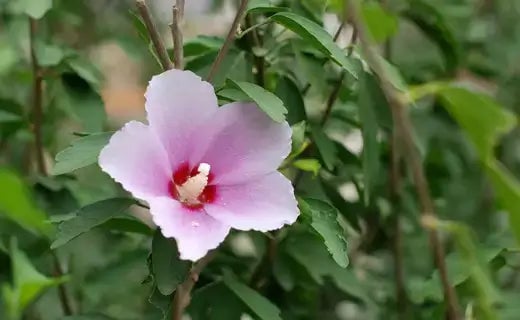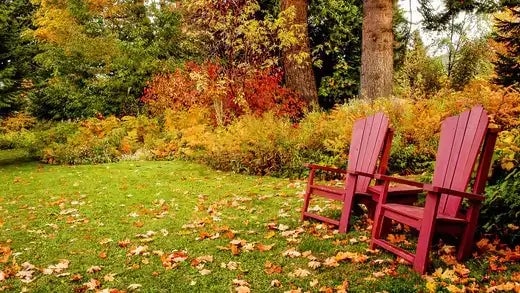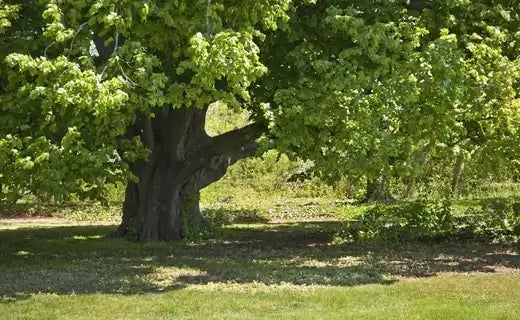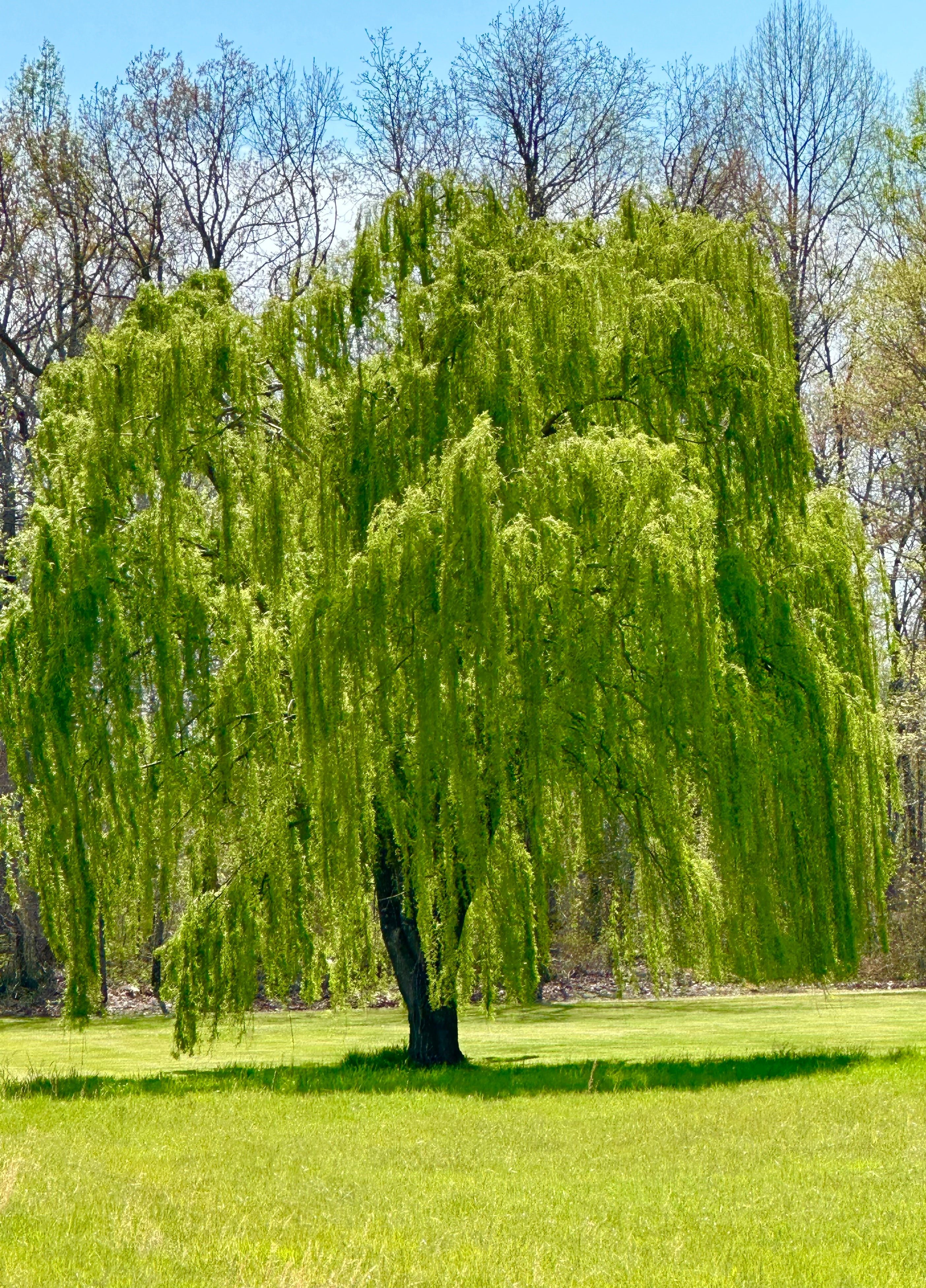A Closer Look
Shade trees are a quintessential part of any landscape, providing relief from the scorching sun and enhancing the beauty of your surroundings. While many trees can provide shade, some stand out for their rapid growth, making them popular for homeowners and landscapers. In this article, we will delve into six fast-growing shade trees, each with its unique characteristics, focusing on the majestic tulip poplar, the resilient sycamore, the enduring oak, the vibrant maple, the striking sweetgum, and the graceful weeping willow. We will also explore the foliage of these trees, shedding light on their distinct leaf shapes, colors, and seasonal transformations.
Tulip Poplar (Liriodendron tulipifera)
The tulip poplar is a towering giant among fast-growing shade trees. Native to eastern North America, these trees are prized for their rapid growth, reaching 60 to 90 feet within 20 to 30 years. They are aptly named for their tulip-shaped flowers that bloom in late spring, boasting shades of yellow and green. The leaves of tulip poplars are unique, resembling a tulip's silhouette, with four lobes and a vibrant green color.
The foliage of tulip poplars offers a delightful display throughout the year. Their lush green leaves provide ample shade in the spring and summer, creating a cool and inviting environment. Come autumn, the leaves transform into a stunning golden yellow, brightening up the landscape with their warm hues. Their rapid growth, distinctive foliage, and remarkable beauty make tulip poplars a favorite choice for those seeking quick and picturesque shade.
Sycamore (Platanus occidentalis)
Sycamores, often called American sycamores or buttonwood trees, are well-known for their adaptability and robust growth. Native to North America, they can reach towering heights of 70 to 100 feet within a few decades. Sycamores are characterized by their unique bark, which peels away in large, puzzle-like pieces, revealing a mottled surface underneath.
The foliage of sycamores is equally intriguing. Their leaves are large, maple-like, and feature three to five lobes. These leaves offer a dense canopy during the spring and summer, providing ample shade and relief from the sun's intensity. As autumn approaches, sycamore leaves transition into a beautiful yellow, orange, and brown mix, casting a warm, inviting glow across the landscape. With their adaptability, rapid growth, and captivating bark, sycamores are an excellent choice for those looking for a resilient and aesthetically pleasing shade tree.
Oaks (Quercus spp.)
Oaks are some of the most revered trees worldwide, known for their longevity, strength, and stately presence. While they are not typically considered fast-growing, some oak species can surprise you with their relatively rapid growth, especially when compared to slower-growing varieties. Red oak (Quercus rubra), pin oak (Quercus palustris), and willow oak (Quercus phellos) are among the fastest-growing oak species.
Oak leaves are iconic and easily recognizable, featuring a unique shape with pointed lobes. They are typically green during the growing season, providing abundant shade with their dense canopy. Oaks undergo a stunning transformation in the fall, displaying a rich tapestry of colors, including red, orange, and brown. While oaks may not grow as fast as some other shade trees on this list, their strength, durability, and impressive foliage make them a timeless choice for those who value the long-term benefits of a shade tree.
Maples (Acer spp.)
Maple trees are renowned for their vibrant foliage, especially during autumn. Several species of maples, such as the silver maple (Acer saccharinum) and the red maple (Acer rubrum), are known for their relatively fast growth.
Maple leaves are typically palmate, meaning they have multiple lobes resembling a hand with outstretched fingers. These leaves provide excellent shade coverage during the warmer months and are known for their lush, green appearance. However, it's during the fall when maples genuinely shine. Their leaves burst into fiery colors, ranging from deep reds and oranges to brilliant yellows. This dazzling display adds a touch of magic to any landscape. Planting a maple tree is an excellent choice if you desire fast growth and a show-stopping autumn display.
Sweetgum (Liquidambar styraciflua)
Sweetgum trees, native to North America, are prized for their striking star-shaped leaves and rapid growth. They can reach 60 to 70 feet within a few decades, making them popular for homeowners looking to establish quick shade.
The sweetgum's foliage is the centerpiece of its appeal. Its leaves are palmately lobed and resemble a star, with five to seven distinct points. During the growing season, these leaves provide a dense canopy that casts refreshing shade. In the fall, sweetgum trees transform into a spectacle of colors, with their leaves turning shades of red, orange, and purple. The distinctive star-shaped seed pods that dangle from the branches add an extra interest to this remarkable tree.
Weeping Willow (Salix babylonica)
Weeping willows are renowned for their elegant, cascading branches that create a serene and picturesque atmosphere. While not as towering as some trees on this list, they are fast growers, reaching 30 to 40 feet in just a few years.
Weeping willows' foliage consists of long, slender leaves that drape gracefully from their branches. These leaves are vibrant green during the growing season, creating a soothing canopy with cool shade and a gentle rustling sound in the breeze. Weeping willows are particularly well-suited for planting near water features, as their branches dip to touch the surface, creating a tranquil reflection on the water's surface.
These six fast-growing shade trees - tulip poplars, sycamores, oaks, maples, sweetgum, and weeping willows - offer unique characteristics and beauty to enhance your landscape. Whether you prioritize rapid growth, stunning foliage, or distinctive bark, there's a shade tree on this list to suit your preferences. These trees provide respite from the sun and contribute to your outdoor spaces' overall aesthetic and ecological value. So, plant your chosen shade tree and watch it flourish, creating a haven of cool comfort and natural beauty in your backyard.
The Many Benefits of Fast-Growing Shade Trees
Rapidly developing shade trees deliver numerous advantages for human populations and environmental health. Establishing a dense canopy by these trees generates shaded areas that provide comfort and reduce energy use while supporting ecosystem health. Thoughtfully selected trees transform landscapes quickly while supporting wildlife populations and reducing infrastructure stress. Although many people admire tree aesthetics, they often overlook the multiple benefits that fast-growing shade trees provide beyond their looks.
Shade trees produce a clear benefit through their capability to lower temperatures. The "heat island effect" occurs in urban areas when concrete, asphalt, and other hard surfaces store heat, and cities become warmer than the surrounding rural regions. Neighborhoods can reduce their elevated temperatures by planting fast-growing shade trees. The vast expanse of leaves captures sunlight to prevent heat accumulation, keeping homes, sidewalks, and public spaces at lower temperatures. The natural cooling effect creates more enjoyable conditions for outdoor activities. It also has tangible economic benefits: Trees that provide shade for buildings enable people to use less air conditioning, which results in energy conservation and lower utility expenses.
Fast-growing shade trees produce significant environmental benefits. In our climate change-focused age, people think tree planting remains one of the easiest yet most successful ways to fight rising carbon dioxide levels. Trees take in carbon dioxide during photosynthesis, which becomes stored in their biomass while oxygen is emitted back into the atmosphere. Fast-growing tree varieties excel at carbon sequestration because their accelerated growth enables them to absorb substantial carbon amounts in a reduced time. Trees stabilize soil through their root systems, improving soil quality and preventing erosion while supporting ecosystem stability. These trees filter airborne pollutants while providing stormwater management by capturing rainfall, which helps decrease flooding risks and reduces pressure on city drainage structures.
Fast-growing shade trees deliver multiple social and psychological advantages beyond their environmental impact. Research demonstrates that being in natural environments with plants helps diminish stress levels while lifting spirits and supporting mental health improvement. Green spaces formed by trees create welcoming meeting places that strengthen community bonds in residential and park settings. The presence of trees helps lessen noise pollution because their leafy canopies act to soften and capture sound waves from active streets and highways. The presence of trees transforms residential spaces into quieter and more serene zones, which contributes to improved well-being for people.
The presence of shade trees can lead to better living conditions and higher property values. Areas with many mature trees tend to be seen as more attractive places to live. The presence of a tree-lined street creates a welcoming atmosphere that attracts both residential buyers and commercial investors. Well-treed regions tend to achieve higher real estate values, which serve as a monetary motivation to support urban forestry initiatives. Trees that grow rapidly start delivering aesthetic and economic benefits within a brief period. Local businesses experience higher shopper numbers alongside the visual appeal enhancements homeowners receive from tree-shaded commercial streets.
Rapidly developing shade trees form essential habitats for native wildlife species. Urban development pushes species out of their natural habitats, but trees provide crucial living spaces for birds, insects, and small mammals. The tree canopy serves as a protective shelter and nesting spot, and its leaves and bark supply various food resources that sustain different organisms. The increase in biodiversity functions to maintain ecological stability and supports pest control by attracting natural predators. A thriving local ecosystem plays a crucial role in sustaining pollinators necessary for growing decorative and edible plants.
Communities can gain educational experiences through the planting of fast-growing shade trees. Community tree planting programs that include school participation and volunteer work create bonds with nature while teaching important ecological and stewardship principles. Young people and adults learn about tree growth processes and essential skills for nurturing seedlings and maintaining trees as living resources. Participants develop environmental responsibility through this process. When community members observe tangible results from their environmental work, they become more eager to join upcoming projects and teach others about their experiences.
The quick growth of shading trees becomes transformative for regions with dangerous heat levels. Quick-growing trees serve as essential assets for communities in developing areas struggling with extreme heat by delivering instant protection from sunlight. Dense tree canopies minimize heat-related health issues while establishing pleasant places for outdoor gatherings. When scarce resources and infrastructure lack reliable air-conditioned spaces, planting trees becomes a deeply impactful long-term strategy.
Fast-growing shade trees provide benefits that extend beyond their foliage and aesthetic appeal. Street and home cooling benefits from these trees and their ability to lower energy usage while improving mental health and supporting wildlife populations, resulting in increased property values. The quick development of these trees delivers noticeable advantages to communities in brief periods, making them desirable options for landscaping in urban and rural areas. Carefully planting and maintaining these trees enables people to build healthier surroundings while strengthening community bonds and establishing sustainable living practices for future generations.
Read more

Known for its vibrant blossoms and easy maintenance, Rose of Sharon is a popular choice among garden enthusiasts. If you want to grow and care for this lovely plant, you've come to the right place.

Preparing your lawn for winter is essential to maintaining a healthy and vibrant property throughout the year. Winter could be harsh on your grass, and taking the proper steps to protect it before ...





